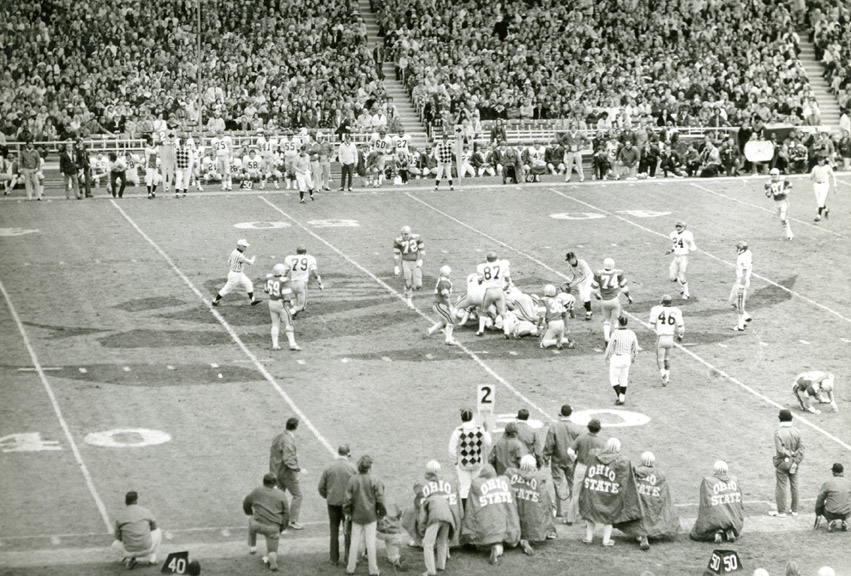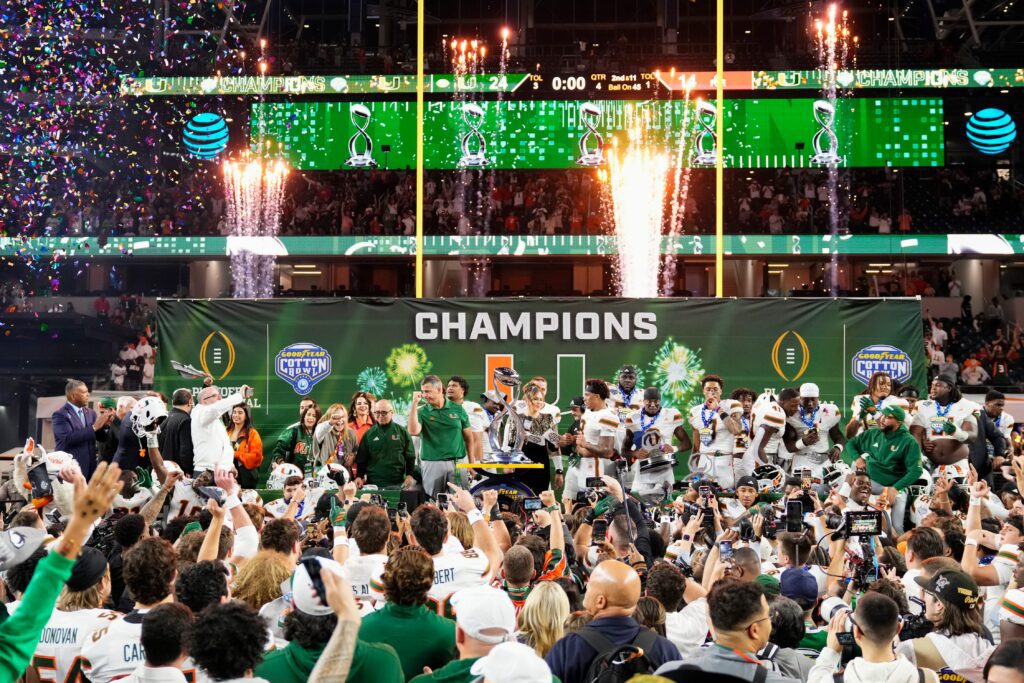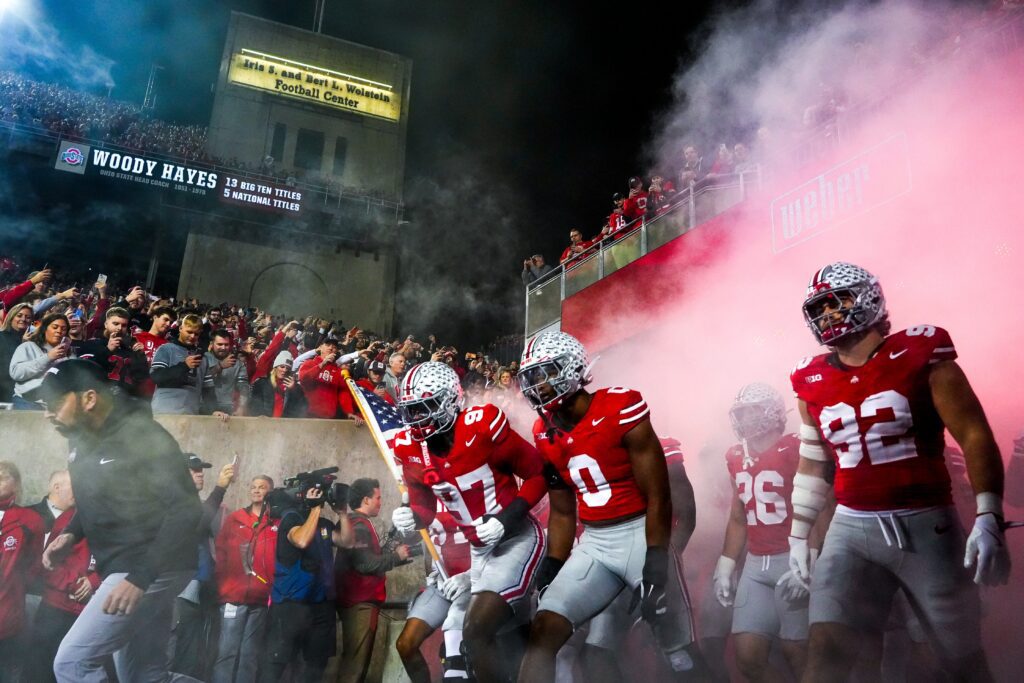Michigan fans will never forget the vote by the BIG Ten athletic directors in 1973 after Ohio State and Michigan played to a 10-10 in the last game of the regular season. The vote was shrouded in mystery and remains a sore spot for the Wolverines fan base to this day. Here are the top five reasons the whole thing was a farce.
Voting Ohio State to the 1974 Rose Bowl Was a Farce
Injury To The Michigan Quarterback
Late in the annual showdown between the hated rivals played in Ann Arbor on November 24, 1973, Michigan quarterback Dennis Franklin broke his collarbone. The vote to decide who would represent the BIG Ten in the 2024 Rose Bowl was only one day after the game.
At the time of the injury it wasn’t known whether Franklin would be able to play in the Rose Bowl. To this day Franklin maintains he would have played and it’s difficult to imagine him sitting the game out. The problem that the BIG Ten had on their hands was that the conference champion had lost four consecutive Rose Bowl games including a 42-17 drubbing of Ohio State the previous year against USC. The athletic directors and conference commissioner didn’t want to lose another one and feared that Michigan wouldn’t be able to compete if Franklin couldn’t play. That doesn’t make it right if they used this as a reason to pick the Buckeyes to represent the conference.
Terrible Timing
Up until the 1971 season, The BIG Ten had a no repeat rule that said if two teams tied for the conference championship that if one team had gone to the Rose Bowl the previous season they couldn’t go again.
Unfortunately for Michigan, the conference changed the rule after the 1971 season which meant that Ohio State could go to the Rose Bowl if the vote went in their favor. Making matters worse was that at the time of the 1973 season only the conference champion could go to a bowl game meaning that the loser of the vote would sit at home for the bowl season. How ironic was it that the rule that had been in place for so long was changed just two years before the 1973 version of “The Game” and after the 1973 season the conference decided to allow more than one team to go to a bowl game.
Michigan Was The Better Team
Ohio State entered the 1973 contest undefeated and ranked number one in the country. The Wolverines were also undefeated and came in ranked number four.
The Bucks took a 10-0 lead into halftime and entered the fourth quarter with the lead still at 10-0.
Michigan finally got on the board with a field goal early in the fourth to make the score 10-3. Then Michigan went right down the field and scored to tie the game. Again unfortunately for Michigan, kicker Mike Lantry missed two late field goals, one from 58 yards that missed by inches and a 44 yarder after an interception that wasn’t as close as the 58 yard attempt. The bottom line is that even though the game ended in a tie, Michigan finished the game with all the momentum and should have won.
As it turned out, even Ohio State head coach Woody Hayes was surprised when the vote revealed that the Buckeyes would return to Pasadena.
The Vote Was Not Made Public
Obviously transparency was not as big of a deal as it is today, however the BIG Ten athletic directors have still to this day not disclosed their votes, which ended up 5-4-1 in favor of Ohio State with one abstention. It’s one thing to not disclose your vote in 1973, but it’s 51 years later and we still don’t know. Obviously some of the AD’s are no longer with us but they took their votes with them to their graves.
It’s more likely that not that some people know who voted for whom but they’re not talking either. But even if we eventually find out how the voting went, it’s still very unlikely we will ever get the reasoning behind the votes. Not only is that a shame, it’s just plain wrong. As a footnote there have been leaked reports about who voted for whom but they are not yet confirmed.
Retribution?
At the time of the vote, there was much speculation that Michigan grad and then Michigan State Athletic Director Burt Smith may have voted for Ohio State due to some bad blood between him and his Alma mater. The unconfirmed reports do suggest that he did in fact vote for the Buckeyes. Assuming that he did it shows that he was not impartial.
The story of the 5-4-1 vote that sent Ohio State to the 1974 Rose Bowl is one that will probably never go away. Those who voted for Ohio State slept a little better after the Rose Bowl when Ohio State defeated USC 42-21. But that nor the other alleged reasons for the vote change the fact that Michigan didn’t get a fair shake. And that will never change.



